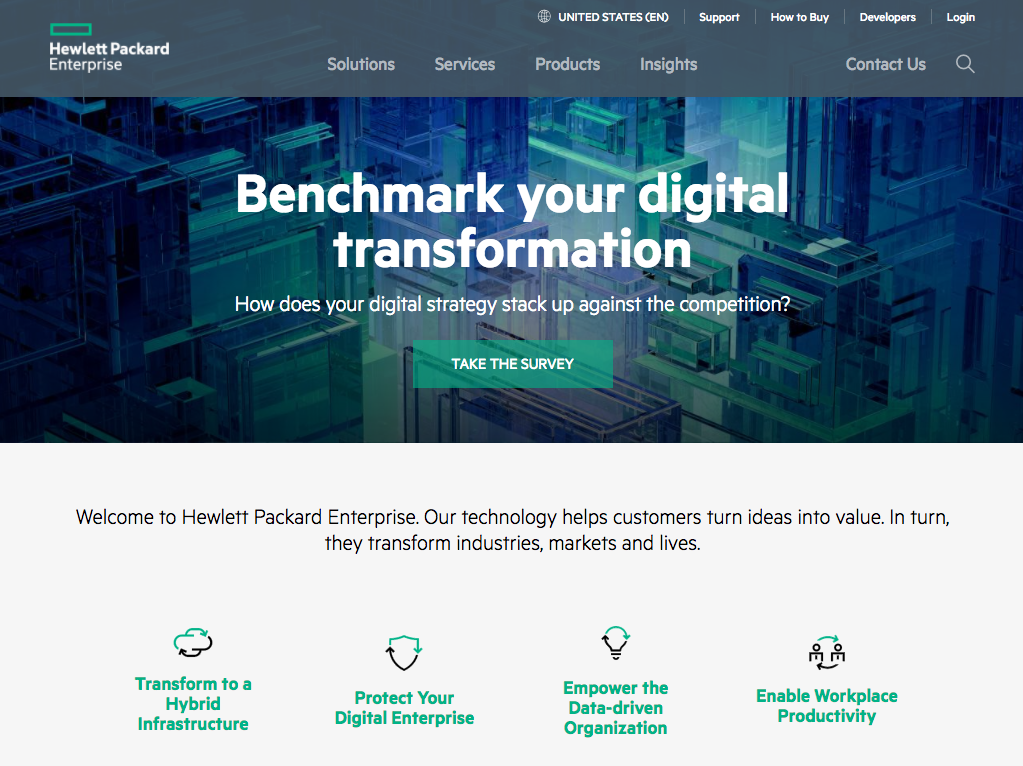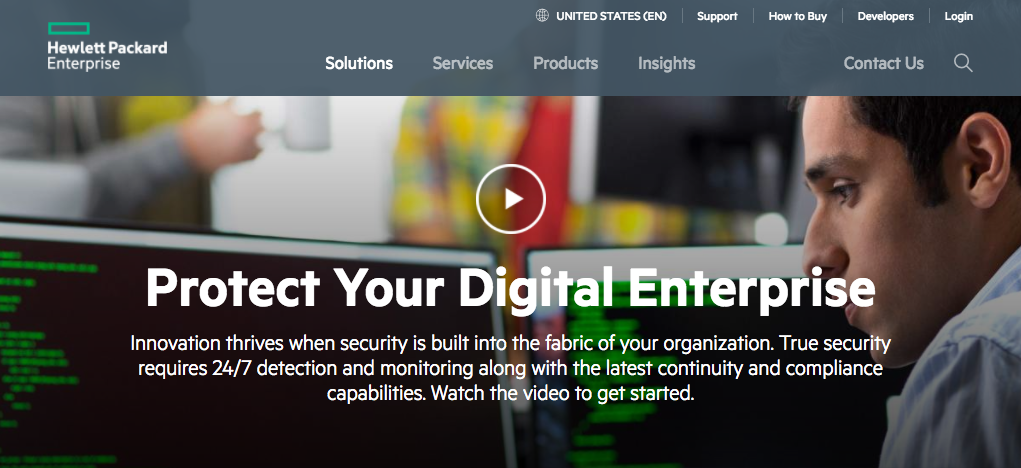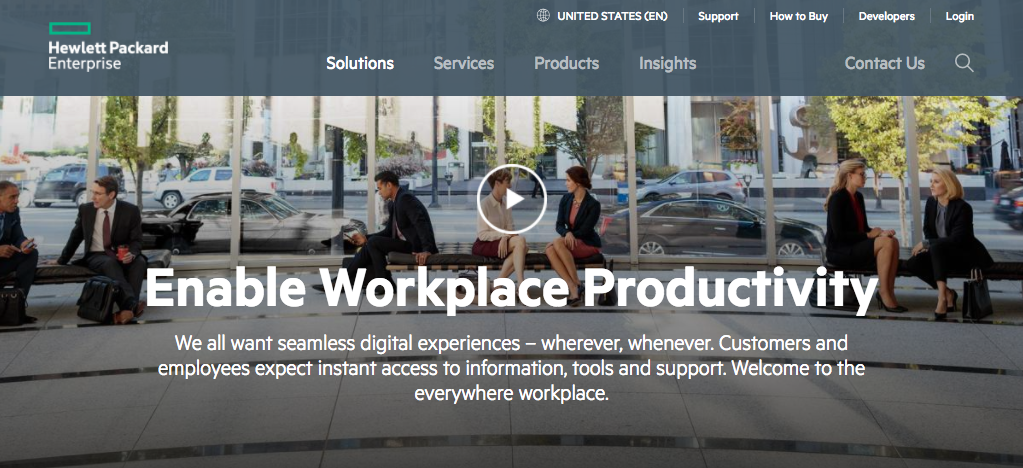First-Ever Digital Strategy for HPE.com
On November 2, 2015, HP Inc. split into two separate publicly traded companies...valued at about $50 billion each. One year prior, HP invited Razorfish to pitch on their new global site with thousands of pages. Razorfish asked me to help inform the new business strategy for digital and creative concepts in order to win the business.
The pitch went great. We won the account and had less than a calendar year to launch the new HPE.com. This was the firmest deadline I've ever experienced for a site so far-flung and complicated...a new public company was to be formed and actively traded on NASDAQ in less than a year.
It was also a once-in-a-lifetime career opportunity. I worked with the outstanding San Francisco, Seattle, and New York teams at Razorfish who recognized the benefit of keeping strategy involved throughout IA, user experience design, and creative phases. I was also honored to take part in broader technology platform discussions. I led stakeholder interviews, gathered many notes, read and watched a lot of internal and external analysis. Then Razorfish’s then VP of UX culled the essence from my intake into three tidy points:
Own the new story from day one of the new company. (Basically: go big or go home.)
Respect realities IT buyers face between their install bases and future ambitions for innovative environments. This ranged from lengthy, disintermediated sales cycles to decisions and evaluations made up and down orgs who buy large-scale IT and services.
Make connections across offerings so the experience doesn't overshoot a bulk of midmarket-up buyers, avoid buyer-driven under-scoping, and connects users to forward-thinking IT. These must happen regardless of where customers are today in their own data center maturity, often central to discussions and scopes around digital transformation (with its various meanings).
Those last two points were critically important. If you've ever worked in a large company, particularly in enterprise IT, you understand the daunting organizational challenges of coordinating between business units that effectively compete against one another (e.g., think on-premise equipment versus cloud deployments).





HP had a partially-formed go-to-market strategy, unfinished corporate branding and market positioning, and teams across the company hurtling toward the same deadline for their work. My challenge was to interview a wide variety of stakeholders from across the company, get clear on business goals for each business division, build alignment toward achievable objectives, and translate these insights for design and engineering.
Extremely early whiteboard art direction for sexy servers. One can almost hear Barry White's voice. Zany creative directors abound.
HP is a massive company, even split in two. Getting all the executives on the same page going in the same direction is tough--especially when certain business units were slated for divestment. The leaders agreed to the strategy.
Our creative and UX teams focused on the customer and gave them pathways to explore between more sophisticated solutions and simpler ways for buyers to consume information about the IT products and services that power networks and data centers around the world.
The result was pages with flexible interaction and content components that allowed IT buyers (and influencers) to satisfy their curiosity about what they came to review...but also have pathways to explore up and down more and less expensive and sophisticated solutions.
Razorfish employs an insanely talented bench of UX, creative, developers, and enterprise software integrators. It is what allowed us to get from early creative concepts on "how to make servers sexy" to simplifying the most complex aspects of a highly involved technology scoping, procurement, and deployment process.
I'm most proud of the realization of the strategy in the experience design. I'm almost as proud that we were a critical part of launching a new public company to which the market reacted with stability, even with a Chinese currency issue in play.




